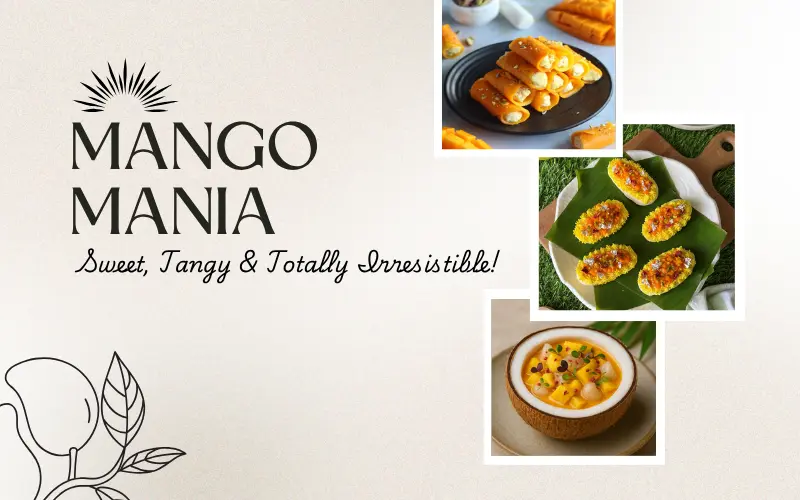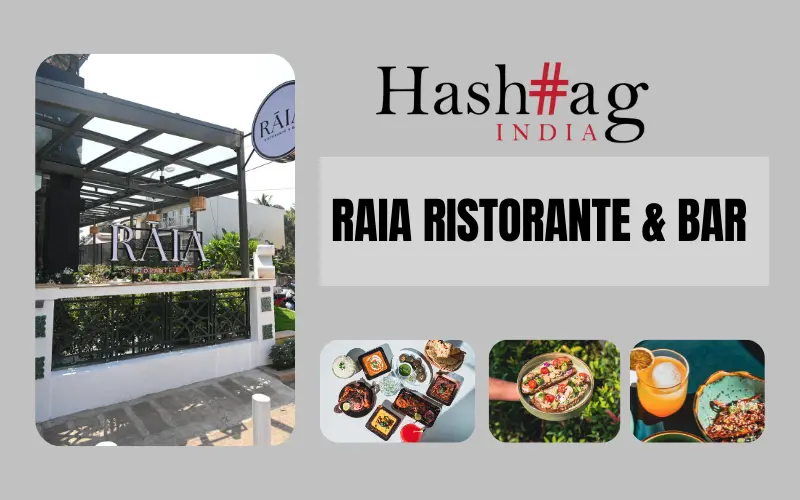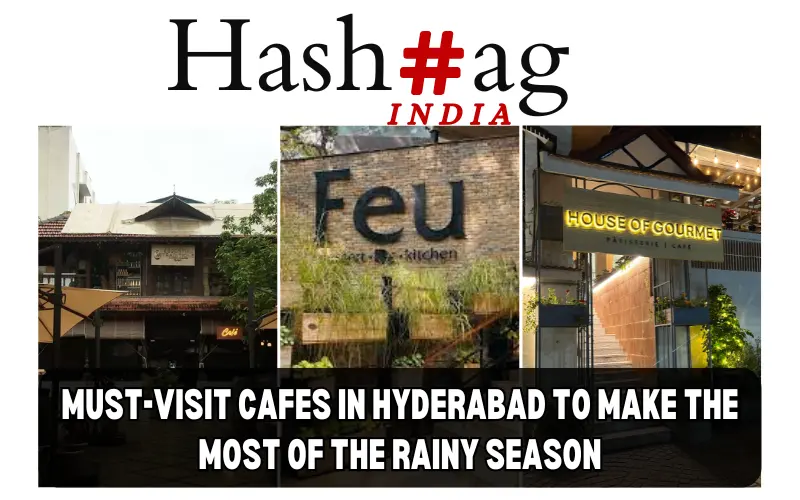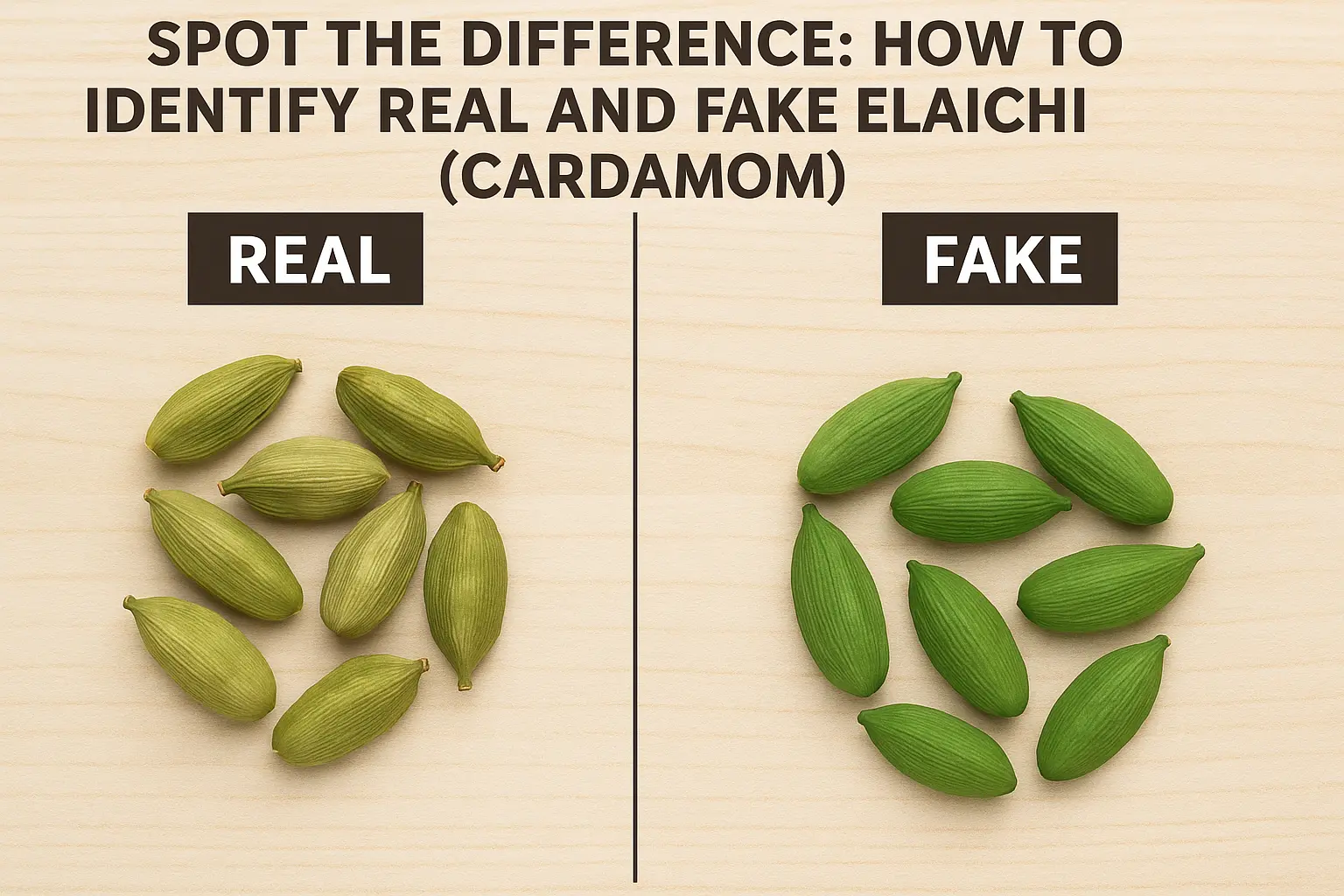Summer and mangoes are a match made in culinary heaven. From creamy Bengali sweets to zesty tropical ceviche, these fun recipes take the king of fruits to gourmet heights. Whether you’re hosting or just indulging, these chef-curated creations are a must-try!
Mango Sandesh Rolls
Mango Sandesh Rolls are a refreshing fusion of two much-loved elements: juicy, ripe mangoes and soft, sweet chenna (fresh Indian cottage cheese). This no-cook dessert brings a cool, elegant twist to summer treats, combining rich textures and light, fruity flavors.
Thin mango slices are wrapped around a creamy chenna filling that’s gently kneaded with icing sugar, aromatic cardamom (elaichi), and saffron (kesar) for a subtle golden hue. Finished with a sprinkle of crushed pistachios, each bite-sized roll is a visual delight and a melt-in-the-mouth indulgence. Perfect for festive platters or simple summer gatherings, these Mango Sandesh Rolls are as effortless as they are exquisite.


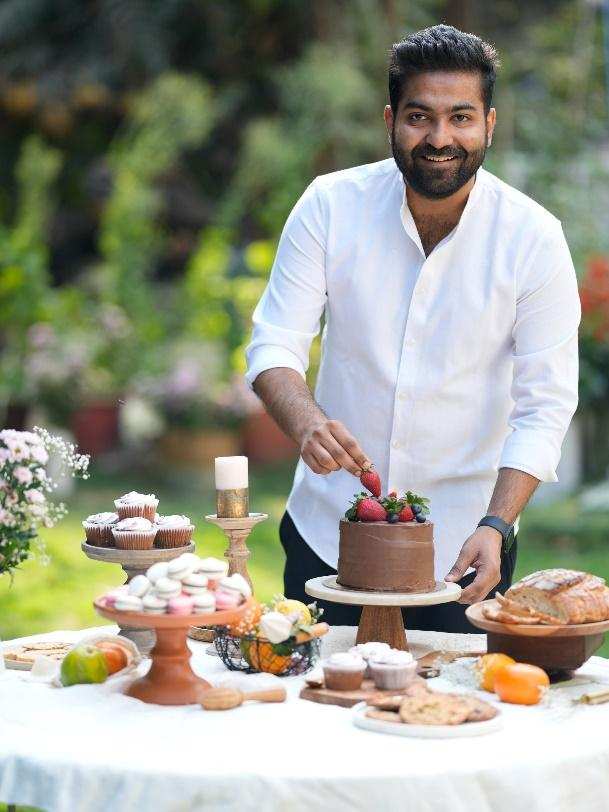
By Chef Parth Bajaj
Chef Parth Bajaj took an unconventional path to the kitchen. An industrial engineering graduate from Nagpur, he traded machines for marinades, teaching himself the art of cooking. Today, he’s not just a self-taught chef but also a TV host and TEDx speaker. Through Instagram and YouTube, Parth shares not just recipes but relatable, behind-the-scenes glimpses of his culinary adventures, successes, failures, and everything in between. His journey proves that social media isn’t just for scrolling, it’s a place to stir up something meaningful.
Ingredients:
- Chenna from 500 ml milk
- Pinch of elaichi (cardamom) powder
- Few strands of kesar (saffron)
- 3 tbsp icing sugar (or 1 tbsp regular sugar)
- 3 ripe mangoes
- Crushed pistachios for garnish
Method:
- Knead the chenna using your palm for a few minutes until smooth.
- Add icing sugar, elaichi powder, and saffron to the chenna, and knead for another minute. Set aside.
- Peel the mangoes and slice them thinly using a mandoline or sharp knife.
- Place a small spoonful of the chenna mixture on each mango slice and gently roll into a cylinder.
- Garnish with crushed pistachios and serve immediately.
Mango Malai Cham Cham
Mango Malai Cham Cham is a decadent take on the classic Bengali sweet. Flavored with ripe mangoes and filled with a creamy mango-infused malai (cream), this dessert is rich, fragrant, and irresistibly indulgent—perfect for festive tables or a special summer treat.
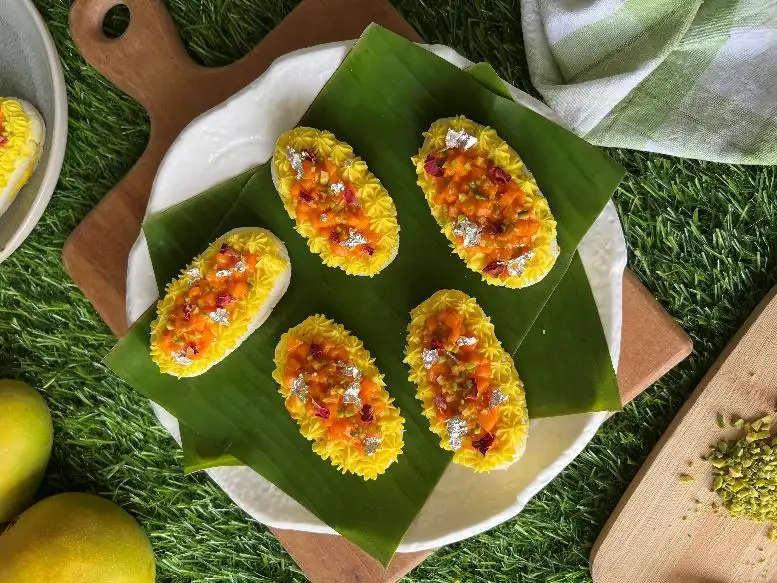
By Neha Deepak Shah
Neha Deepak Shah grew up in Mumbai, where her love for cooking began at an early age. Over the years, that childhood passion transformed into a celebrated culinary career. In 2015, she became the first runner-up on MasterChef India Season 4. Since then, Neha has hosted six food shows—Jashn-e-Daawat and Made in Gujarat on FoodXP and TravelXP—featuring over 900 innovative vegetarian dishes. In 2023, she was featured in Forbes India’s Top 100 Digital Stars list. Neha also made history with a Google Doodle feature for setting a world record with 51 flavors of Pani Puri.
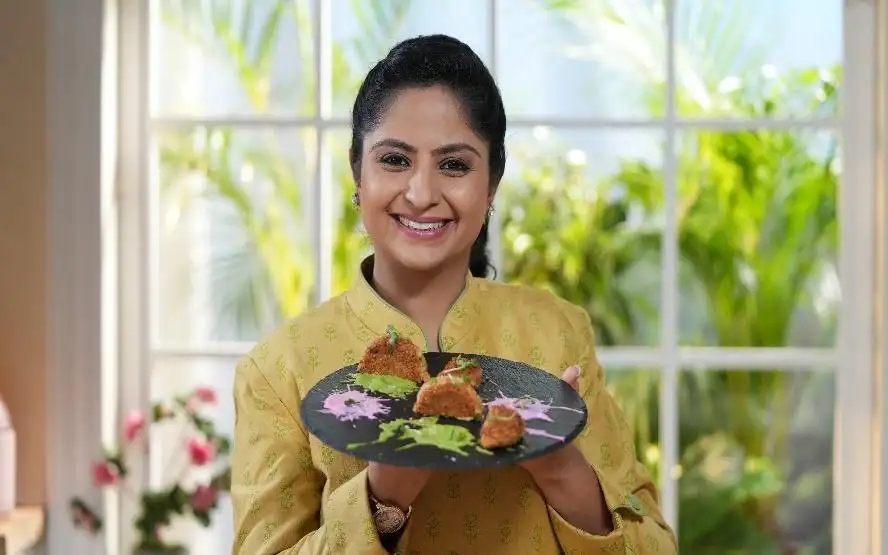
She began creating food content in April 2020 with a mission to share dishes inspired by her most cherished memories. For Neha, cooking is soul-deep—and her platform reflects the simplicity, joy, and comfort of making good food at home.
Ingredients:
For Chenna:
- 1 litre cow’s milk
- 2–3 tbsp vinegar + 2 tbsp water
For Chashni (sugar syrup):
- 1 cup sugar
- 3½ cups water
- A few cardamom pods
For Instant Mawa:
- ¼ cup milk
- 1 cup milk powder
- 1 tsp ghee
- ¼ cup sugar
- 8–10 saffron strands soaked in 1 tsp milk
Others:
- ¼ cup fresh cream (for whipping into the mawa)
- Chopped mangoes, pistachios, rose petals & varq (silver leaf), for garnish
Method:
- Prepare the Chenna: Heat the milk until just below boiling (around 90°C). Gradually add the vinegar-water mixture to curdle it.
- Strain through muslin and rinse under cold water to remove sourness. Squeeze out excess moisture.
- Knead the chenna with the heel of your palm for 7–8 minutes until smooth.
- Shape into small cylinders and gently flatten them into oval discs.
- Make the Chashni: Boil water with sugar and cardamom until bubbling.
- Add the chenna discs to the syrup, cover, and cook on high heat for 15 minutes.
- Turn off the heat and let the discs cool in the syrup for 1–1.5 hours.
- Prepare the Instant Mawa: In a pan, heat ghee, milk, and milk powder on low flame. Stir continuously.
- Add the saffron milk and sugar. Cook until glossy, then cool.
- Transfer to a bowl and gradually add fresh cream. Whip with a hand mixer until light and fluffy.
- Gently squeeze excess syrup from the cooled chenna discs and slice them in half.
- Spread the whipped mawa on one half and sandwich it with the other.
- Top with more mango malai and garnish with mango pieces, pistachios, rose petals, and varq.
- Chill before serving. Enjoy!
Vishesh Tippani (Pro Tips):
- Curdle the milk just below boiling point (~90°C) for best texture.
- Do not stir the milk vigorously after curdling—this can ruin the chenna.
- Chenna should be soft but not wet. Too dry = dense results; too wet = breaks during cooking.
- Cook the mawa slowly on low heat for a smooth texture.
- Add cream gradually when whipping; the final texture should be airy like whipped cream.
Mango & Litchi Ceviche with Smoked Chili and Coconut Sauce
A tropical twist on a classic ceviche, this dish brings together ripe mango, fresh litchis, and herbs, gently marinated in citrus and crowned with a smoked chili-coconut emulsion. The result is a vibrant medley of sweetness, spice, tang, and umami light, aromatic, and perfect for warm-weather indulgence.
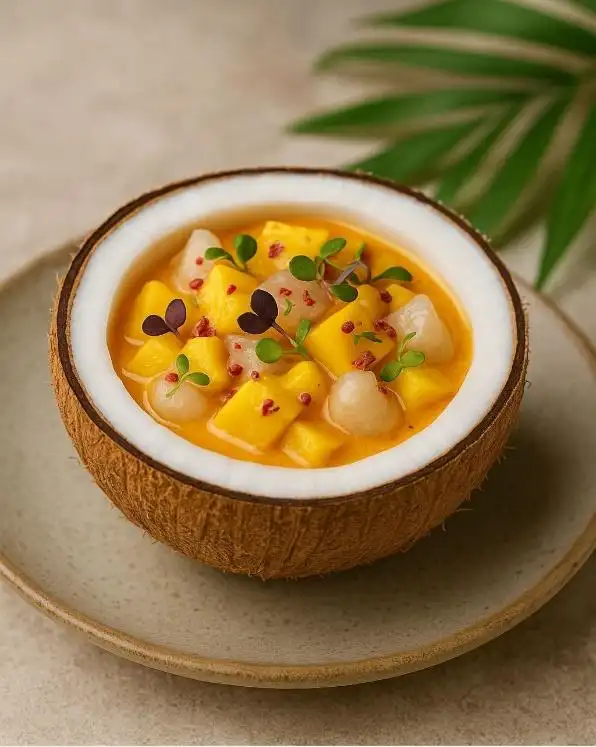
By Chef Nishant
Chef Nishant was recently honoured with the Independent Chef of the Year 2024 by the Hospitality Horizon Top Chef Awards. At the Gourmet Fest 2024, he also secured gold in two prestigious categories: Chef of the Year Non-Institutional and Chef of the Year Progressive.
With over 20 years of culinary experience, Chef Nishant’s career spans a range of acclaimed fine-dining establishments. He began his journey at The Oberoi, followed by three years at Madinat Jumeirah, Dubai, where he worked at award-winning restaurants like Pierchic, Segreto, and Khaymat Al Bahar. He later joined the pre-opening teams of Roseate Hotels (formerly Dusit Devarana) and Olive Bar & Kitchen.
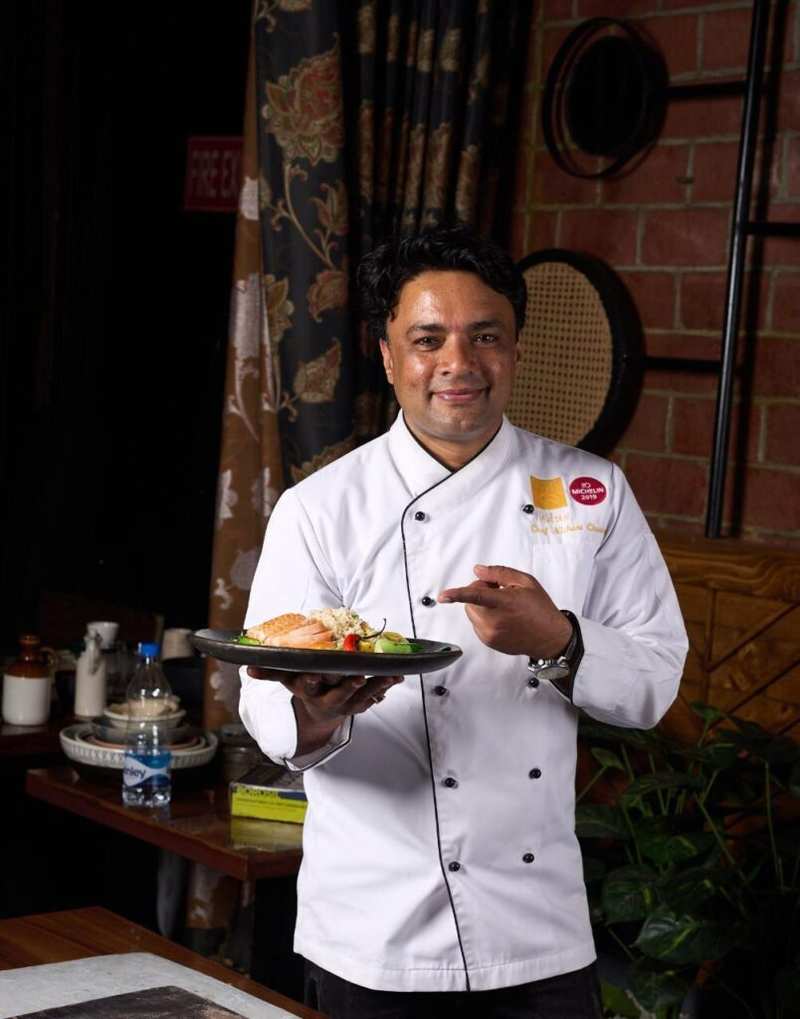

A firm believer in sustainability, Chef Nishant was handpicked for training at the John Folse Culinary Institute in Louisiana. Beyond the kitchen, he is a noted television host and culinary innovator, known for combining bold global flavors with Indian sensibilities.
Serves: 2–3
Prep Time: 25 mins
Chill Time: 15–30 mins
Ingredients
For the ceviche:
- 1 medium ripe mango (firm and sweet), diced
- 6–8 fresh litchis, peeled, pitted, and quartered
- 1 tbsp red onion, finely chopped
- 1½ tbsp lime juice
- ½ tsp lime zest
- 1 tsp fresh coriander stems, finely chopped
- Salt to taste
For the smoked chili-coconut sauce:
- 100 ml fresh coconut milk
- 1 dry red Kashmiri chili
- ¼ tsp smoked paprika (or substitute with smoked chili oil)
- ½ tsp grated ginger
- 4–5 curry leaves
- ¼ tsp mustard seeds
- ½ tsp tamarind pulp
- ¼ tsp jaggery
- 1/6 tsp coconut oil
- Salt to taste
Method
- Prepare the Ceviche Base:
In a mixing bowl, combine diced mango, litchis, red onion, lime juice, zest, chopped coriander stems, and salt. Toss gently and set aside to marinate. - Make the Smoked Chilli-Coconut Sauce:
- Heat coconut oil in a small pan. Add mustard seeds and curry leaves.
- Once they splutter, add the dry red chilli and ginger. Sauté lightly until aromatic.
- Stir in the tamarind pulp, jaggery, smoked paprika, and salt.
- Pour in the coconut milk and bring to a gentle simmer. Remove from the heat and let it infuse.
- Assemble the Dish:
- Once cooled, drizzle the smoked chilli-coconut sauce over the marinated fruit.
- Chill for 15–30 minutes before serving to allow flavours to meld.
- This dish celebrates contrasts sweet mango, floral litchi, zesty citrus, and smoky spiced coconut making it an ideal appetiser or palate cleanser. Serve chilled in cocktail glasses or ceramic spoons for an elevated presentation.

